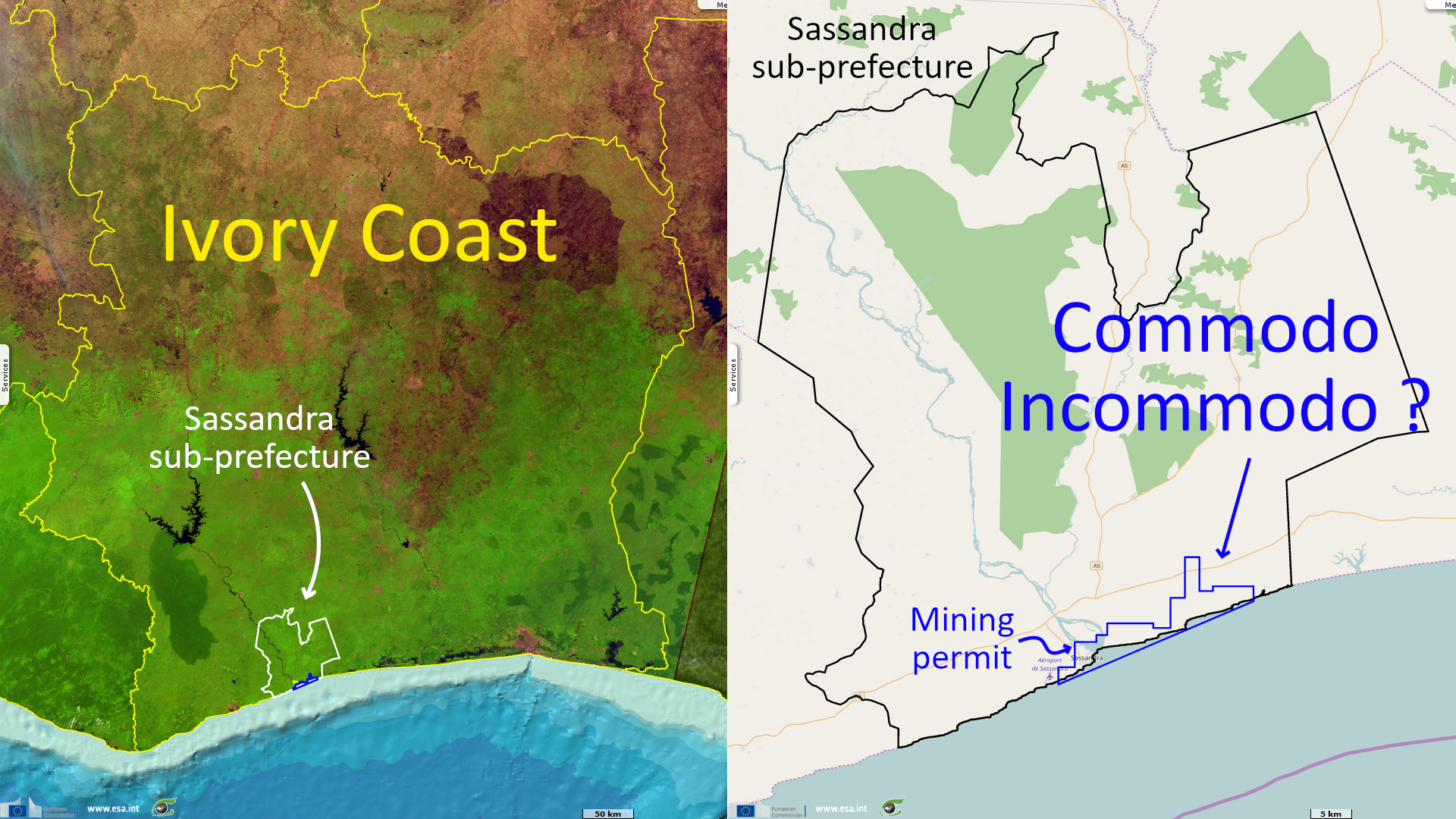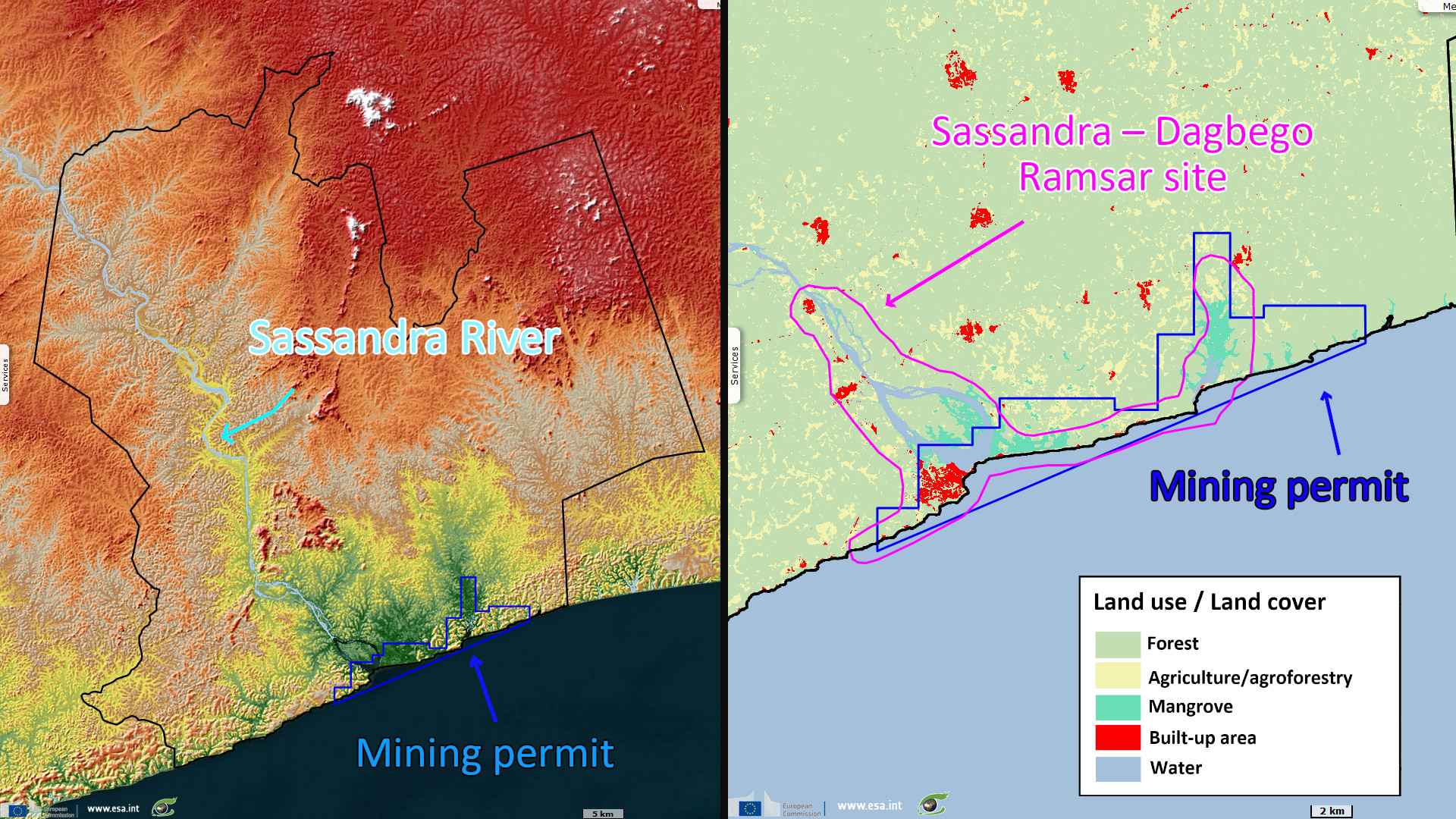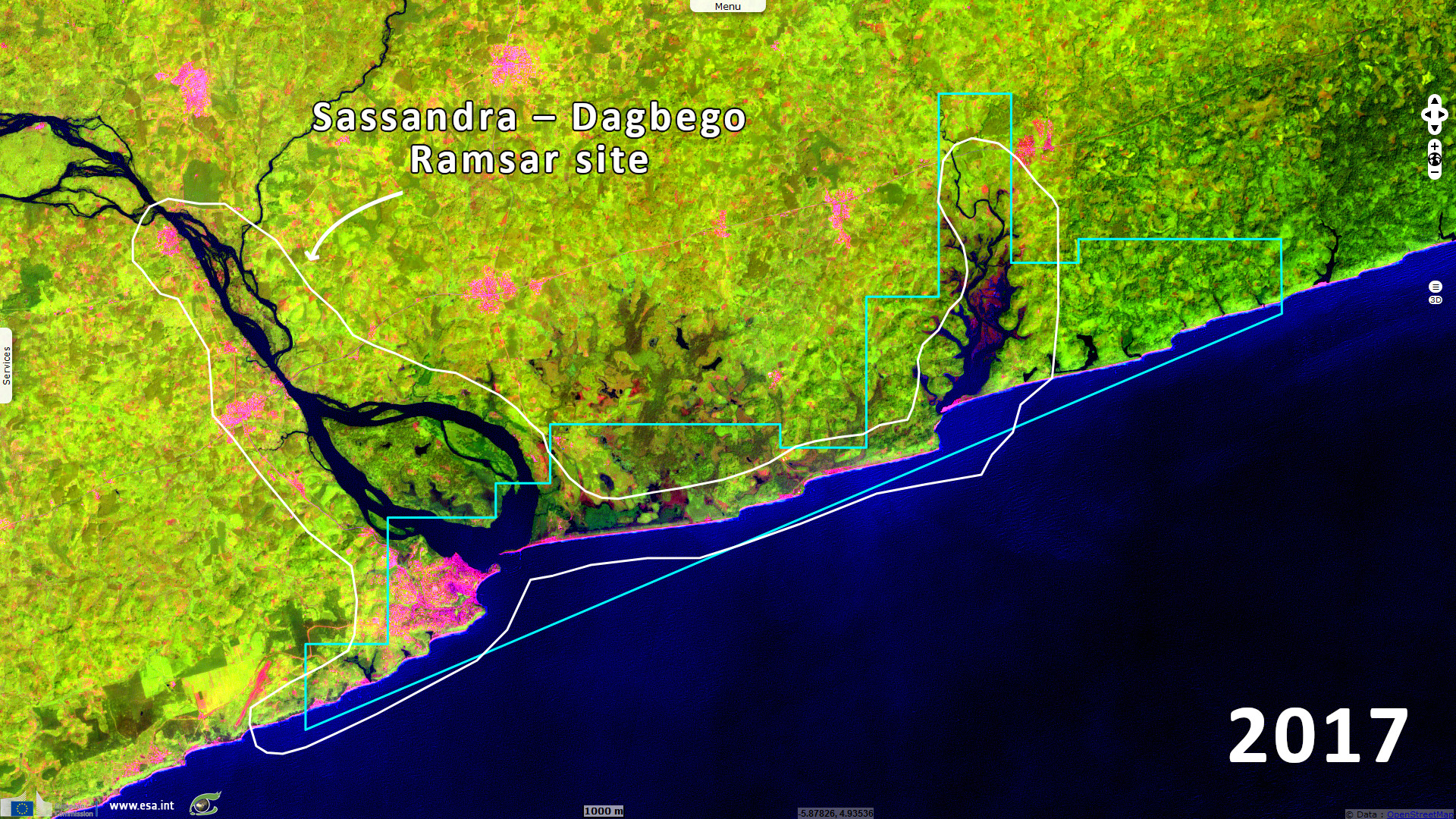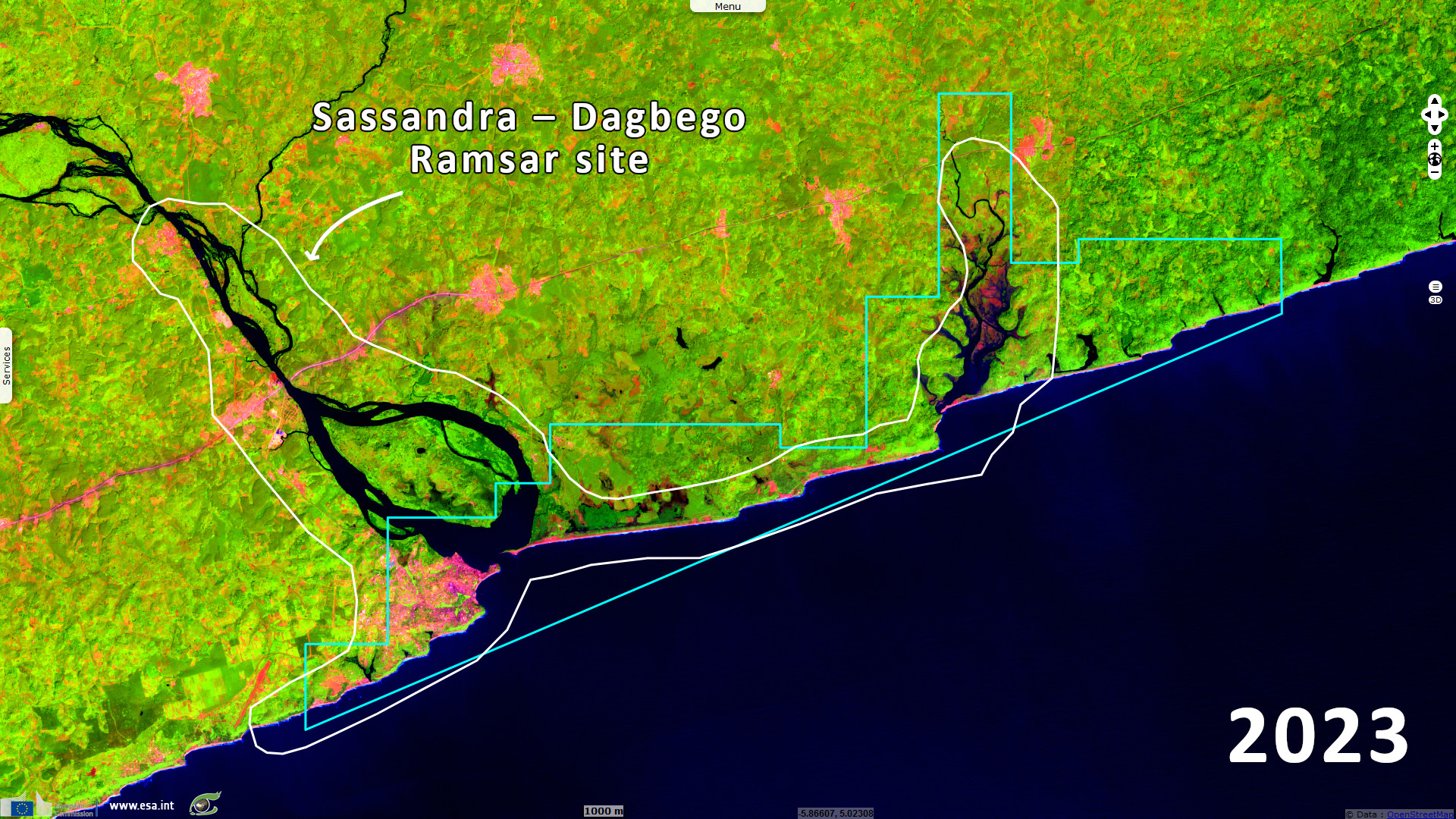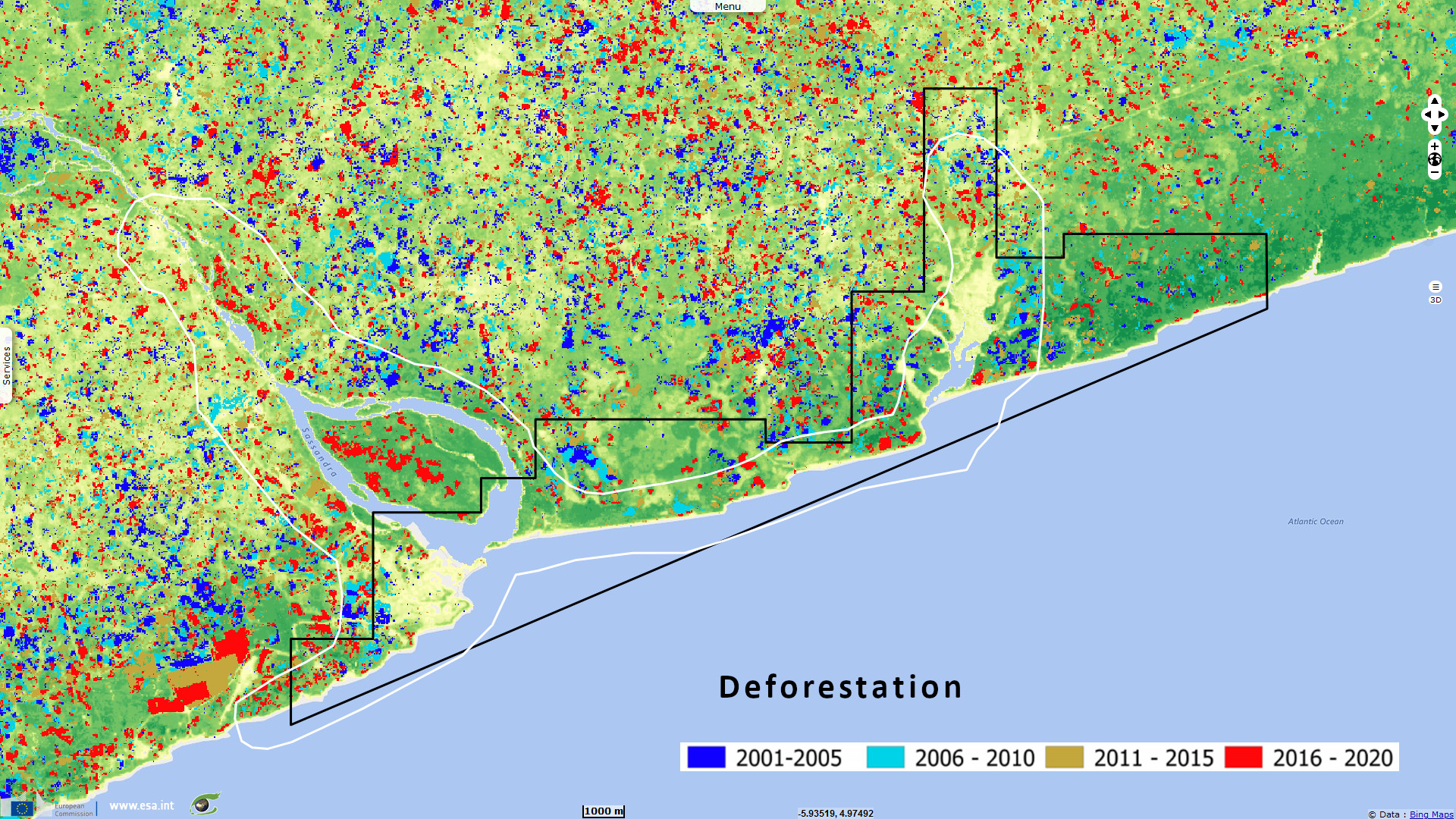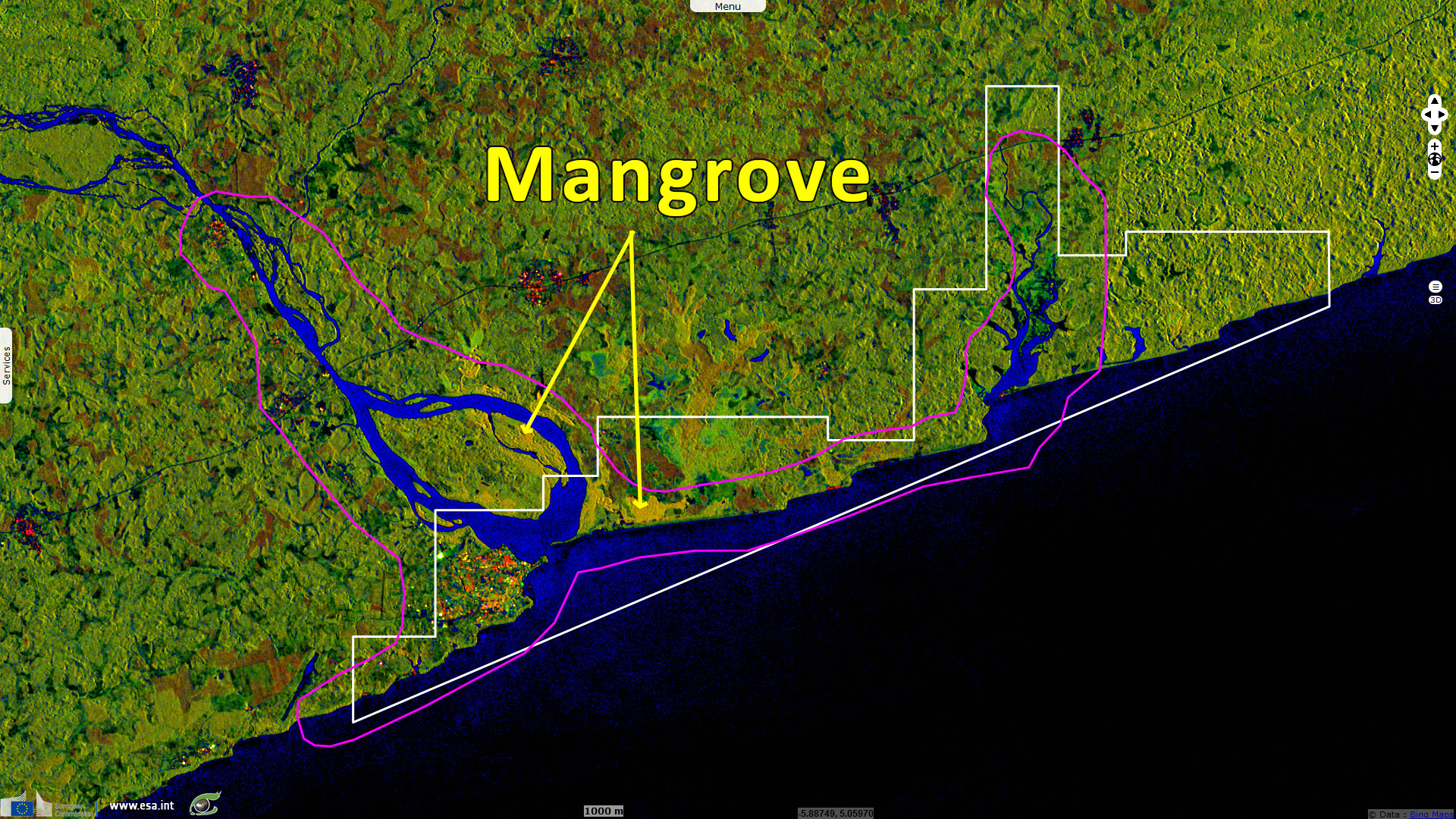"Commodo and Incommodo" investigation of a mining project, Ivory Coast
Sentinel-1 CSAR IW acquired on 30 September 2022 at 18:42:42 UTC
Sentinel-2 MSI acquired on 24 December 2017, 03 January 2020, 22 January 2022, 02 January 2023
Sentinel-3 SLSTR RBT acquired on 03 January 2020
Sentinel-2 MSI acquired on 24 December 2017, 03 January 2020, 22 January 2022, 02 January 2023
Sentinel-3 SLSTR RBT acquired on 03 January 2020
Keyword(s): Land, natural resources, Commodo Incommodo, Mangrove, Mine permit, Sassandra, Ramsar wetland, Ivory Coast
A request for investigation "Commodo and Incommodo" has been opened by the Sassandra sub-prefecture (Ivory Coast) regarding a request for the exploitation of heavy mineral concentrate such as ilmenite, magnetite, garnet, zircon, ilmenorutile, rutile and monazite. The exploitation would extend over an area of 83.14 km².
As shown in Fig.2 (right), the mining permit overlaps with the Sassandra-Dagbego Ramsar site.
The Sassandra-Dagbego Ramsar site covers 10,551 ha and extends over 20 km east to the mouth of the Dagbégo lagoon, over 20 km north to the extension of the Sassandra river to Gaoulou, and over 10 km west to Grand Drévin).
This is the area of affluence of primary (Sassandra) and secondary rivers, considered by Conservation International as a high priority area for the conservation of freshwater ecosystems, marine ecosystems and waterbirds.
The Ivory Coast mangroves have only three species of mangroves: Rhizophora racemosa (Red Mangrove) and Avicennia germinans (White Mangrove) and Conocarpus erectus (Gray Mangrove). The Ramsar site is the only place where we are certain to find all three types of mangroves at the same time.
The area is home to the best preserved mangroves in the country.
Among the many criteria that make this area a unique ecosystem, we mention the population of animal and plant species that maintain the biological diversity of the Ivorian coastal forest, including avian fauna and other species threatened with extinction (Source: The Ramsar Sites Information Service).
